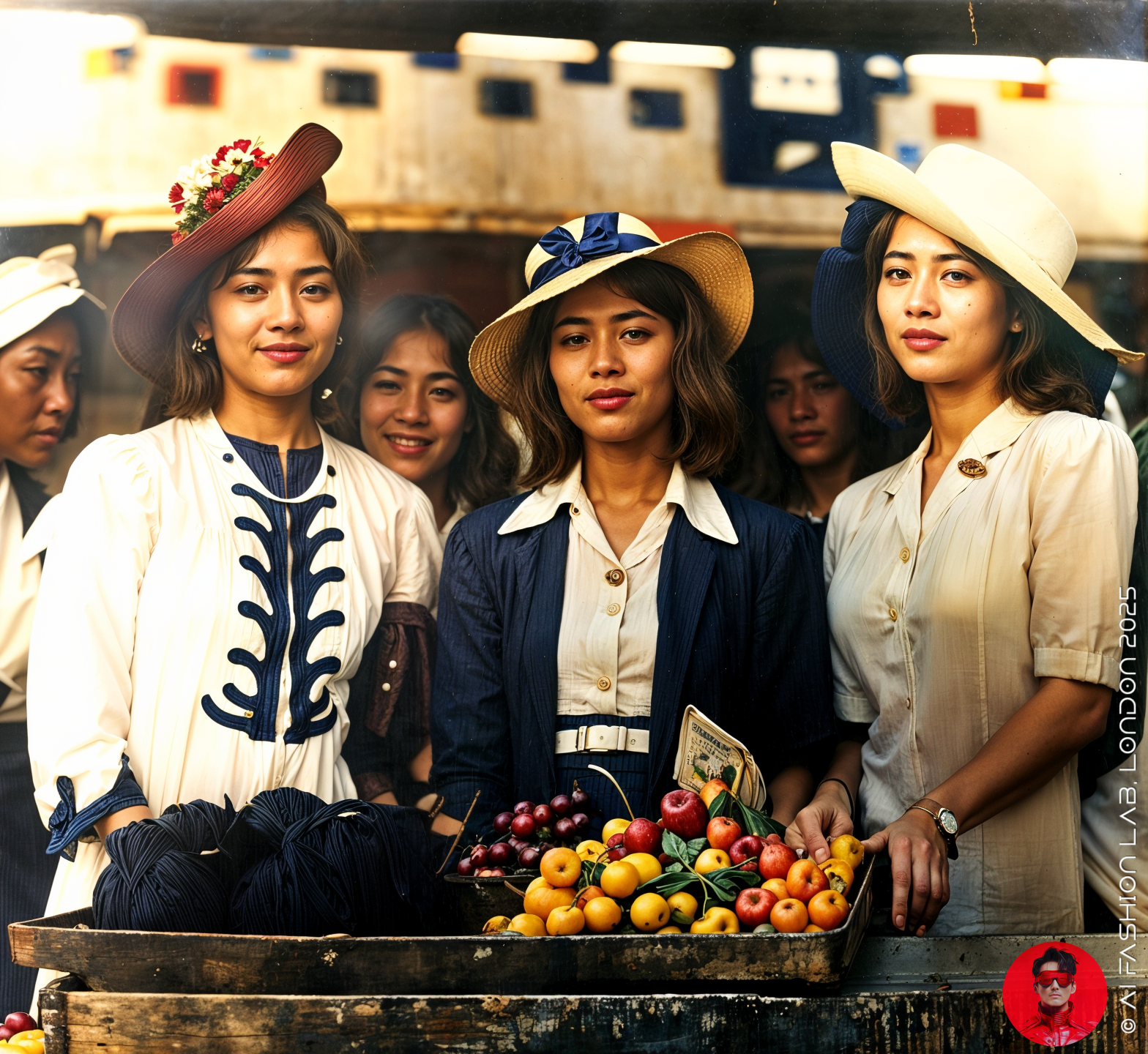From Black-and-White to AI-Enhanced: My Process for Training LoRA on Thai History
My process begins with colourising and enhancing original black-and-white photographs, which serves as the foundation for my dataset.
From Black-and-White to AI-Enhanced: My Process for Training LoRA on Thai History
Many people have asked how I train my LoRA model on 1940s Thailand, particularly in relation to the นโยบายมาลานำไทย (Hats Lead the Nation Policy). My process begins with colourising and enhancing original black-and-white photographs, which serves as the foundation for my dataset. This step takes time and effort because the quality of the dataset is the most crucial aspect of training a successful LoRA model—it must be as close to perfection as possible.
However, when colourising these historical photographs, I don’t aim for absolute accuracy or excessive detail. The purpose of this step is not to create a historically precise colour representation but rather to teach the AI that these images are ‘colour images.’ This allows the model to learn the concept of colour and integrate it into its training. Once the LoRA is fully trained, we gain much greater flexibility. Using Flux Dev, we can adjust colours, backgrounds, and other stylistic elements through prompts, refining the final output according to our vision.
LoRA is particularly useful for generating historically accurate fashion styles because it allows for fine-tuned control over specific details, such as fabric textures, silhouettes, and accessories. By training the model on carefully prepared datasets, we can ensure that the AI understands the unique characteristics of a specific era’s fashion. In my case, training LoRA on 1940s Thai fashion enables me to recreate and explore how clothing styles from that period might have looked in colour, helping to bring history to life in a way that traditional black-and-white photographs cannot.
Here are some examples of the original images alongside their AI-enhanced and colourised versions. This method can also be applied to restoring old photographs, making it a valuable tool for those looking to preserve and revitalise historical imagery. I hope this explanation is helpful for anyone interested in training LoRA models for historical fashion with Flux Dev.
จากภาพขาวดำสู่ AI-Enhanced: กระบวนการฝึก LoRA สำหรับแฟชั่นในประวัติศาสตร์ไทย
หลายคนถามว่าผมฝึก LoRA สำหรับประเทศไทยในยุค 1940s อย่างไร โดยเฉพาะในบริบทของ นโยบายมาลานำไทยกระบวนการของผมเริ่มต้นด้วยการลงสีและปรับปรุงภาพถ่ายขาวดำต้นฉบับ ซึ่งเป็นขั้นตอนสำคัญสำหรับการสร้างชุดข้อมูล (dataset) สำหรับการฝึก LoRA ขั้นตอนนี้ใช้เวลาค่อนข้างมาก เนื่องจากคุณภาพของชุดข้อมูลเป็นปัจจัยที่สำคัญที่สุดในการฝึก LoRA ที่ดี—ชุดข้อมูลจะต้องสมบูรณ์แบบที่สุดเท่าที่จะเป็นไปได้
อย่างไรก็ตาม การลงสีภาพถ่ายเก่าไม่จำเป็นต้องให้ความแม่นยำแบบสมบูรณ์หรือรายละเอียดมากเกินไป จุดประสงค์หลักของขั้นตอนนี้ไม่ใช่การสร้างสีที่ถูกต้องตามประวัติศาสตร์ แต่เป็นการทำให้ AI เข้าใจว่า ‘นี่คือภาพสี’ ซึ่งช่วยให้แบบจำลองเรียนรู้แนวคิดของสีและนำไปใช้กับการฝึกได้อย่างถูกต้อง เมื่อ LoRA ได้รับการฝึกเรียบร้อยแล้ว เราจะสามารถปรับสี ฉากหลัง และองค์ประกอบอื่น ๆ ได้อย่างอิสระผ่านการใช้คำสั่ง (prompt) บน Flux Dev เพื่อสร้างภาพที่ตรงกับวิสัยทัศน์ของเรา
LoRA มีประโยชน์อย่างยิ่งสำหรับการสร้างแฟชั่นในยุคสมัยเฉพาะ เนื่องจากช่วยให้เราควบคุมรายละเอียดที่สำคัญ เช่น เนื้อผ้า ซิลูเอต และเครื่องประดับได้อย่างแม่นยำ การฝึก LoRA บนชุดข้อมูลที่เตรียมมาอย่างดีจะช่วยให้ AI เข้าใจลักษณะเฉพาะของแฟชั่นในช่วงเวลานั้น ๆ สำหรับกรณีของผม การฝึก LoRA บนแฟชั่นไทยในยุค 1940s ทำให้สามารถสร้างภาพและสำรวจว่าสไตล์การแต่งกายในยุคนั้นอาจมีลักษณะเป็นอย่างไรเมื่อถูกนำเสนอในรูปแบบภาพสี ซึ่งช่วยให้ประวัติศาสตร์มีชีวิตชีวาขึ้นในแบบที่ภาพถ่ายขาวดำแบบเดิมไม่สามารถทำได้
นี่คือตัวอย่างของภาพถ่ายต้นฉบับ เปรียบเทียบกับเวอร์ชันที่ได้รับการปรับปรุงและลงสีโดย AI วิธีนี้สามารถนำไปใช้กับการฟื้นฟูภาพถ่ายเก่าได้เช่นกัน ซึ่งเป็นเครื่องมือที่มีคุณค่าสำหรับผู้ที่ต้องการอนุรักษ์และฟื้นฟูภาพประวัติศาสตร์ หวังว่าคำอธิบายนี้จะเป็นประโยชน์สำหรับทุกคนที่สนใจฝึก LoRA เพื่อสร้างภาพบุคคลทางประวัติศาสตร์ด้วย Flux Dev
#aifashionlab #AI #aiartist #aiart #aifashion #aifashiondesign #aifashionstyling #aifashiondesigner #fashion #fashionhistory #historyoffashion #fashionstyling #fashionphotography #digitalfashion #digitalfashiondesign #digitalcostumedesign #digitaldesign #digitalaiart #chiangmai #ThaiFashionHistory #ThaiFashionAI #flux #fluxlora







































